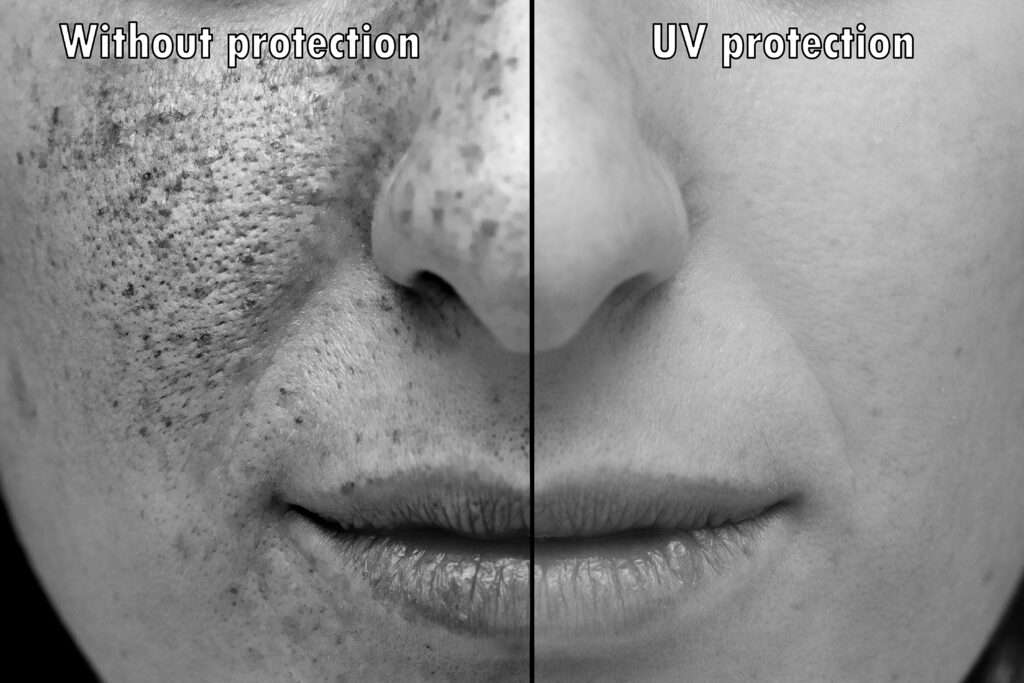Preventing Sun Damage and Treating Sun Damaged Skin
Long term exposure to the sun without appropriate protection is possibly the largest contributor to the visible signs of ageing. Protecting your skin from the sun’s harmful rays can reduce the chance of sunburn, brown spots and faster skin ageing, whilst also protecting against skin cancer.
Allow me to help you find the best skincare and treatment plan to successfully tackle Sun Damaged skin leaving a clear, smoother complexion.
Allow me to help you find the best skincare and treatment plan to successfully tackle Sun Damaged skin leaving a clear, smoother complexion.
The Effects of Too Much Sun
Protection from the sun’s UVA and UVB rays is important all year round, not just in the summer months.
Extended exposure to the sun’s rays contributes to the ageing of the skin, with visible signs. Photo-damage is a result of sun exposure that can cause skin changes such as wrinkles, roughness, and hyperpigmentation. It can also cause skin cancer.
Extended exposure to the sun’s rays contributes to the ageing of the skin, with visible signs. Photo-damage is a result of sun exposure that can cause skin changes such as wrinkles, roughness, and hyperpigmentation. It can also cause skin cancer.
What is ‘Photodamaged Skin’?
Characteristics of photodamaged skin include:
Guarding against the damaging rays of the sun helps to prevent the visible signs of ageing, such as:
What is the difference between chemical SPF and physical SPF?
Chemical Sunscreen:
Physical Sunscreen:
- Skin cell turnover is significantly slowed down; old skin cells remain on the surface
- Melanocytes produce excess melanin, resulting in mottled hyperpigmentation / dark spots
- Collagen and elastin are damaged and the top layer of the skin is no longer supported; the skin appears wrinkled and saggy. The ‘bounce back’ of the skin no longer remains.
Guarding against the damaging rays of the sun helps to prevent the visible signs of ageing, such as:
- Fine lines
- Wrinkles
- Dry skin
- Sun spots
- Sallowness
- Poor skin tone
What is the difference between chemical SPF and physical SPF?
Chemical Sunscreen:
- Takes the UV rays into the skin and disperses it as heat
- Provides broad-spectrum protection from UVA and UVB rays
Physical Sunscreen:
- Reflects/scatters the sun rays
- Provides broad-spectrum protection from UVA and UVB rays


How to Protect Your Skin?
EVERY DAY:
- Seek the shade, particularly between 10am and 2pm
- Avoid all tanning booths
- Cover up with clothing, a broad-brimmed hat and UV-blocking sunglasses
- Use a broad-spectrum sunscreen with an SPF30+
- Apply 2 tablespoons of sunscreen all over the body 15 minutes before going outside; reapply every 2 hours, and after swimming or sweating
EVERY MONTH:
- Examine the skin head to toe for changes
EVERY YEAR:
- Seek a medical professional for a complete skin exam

